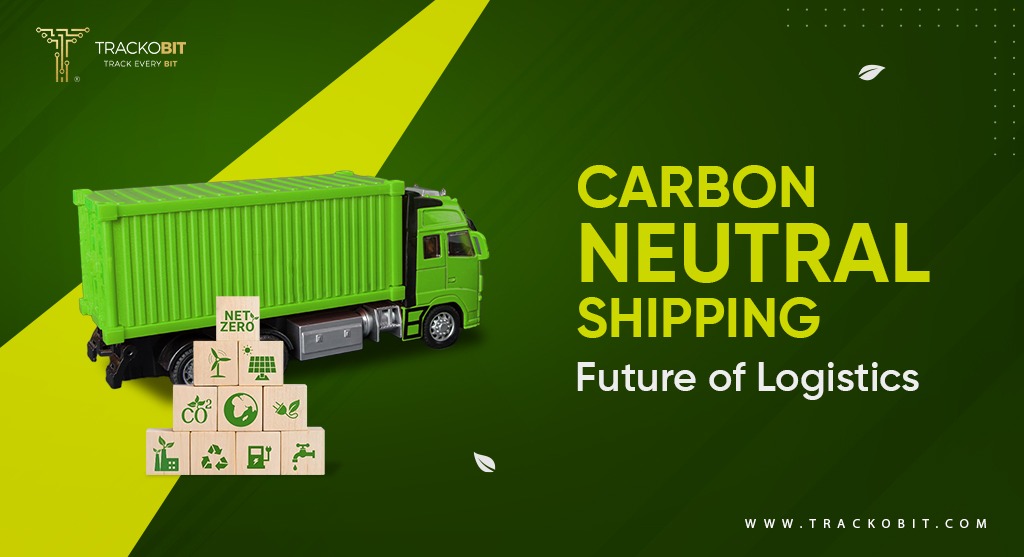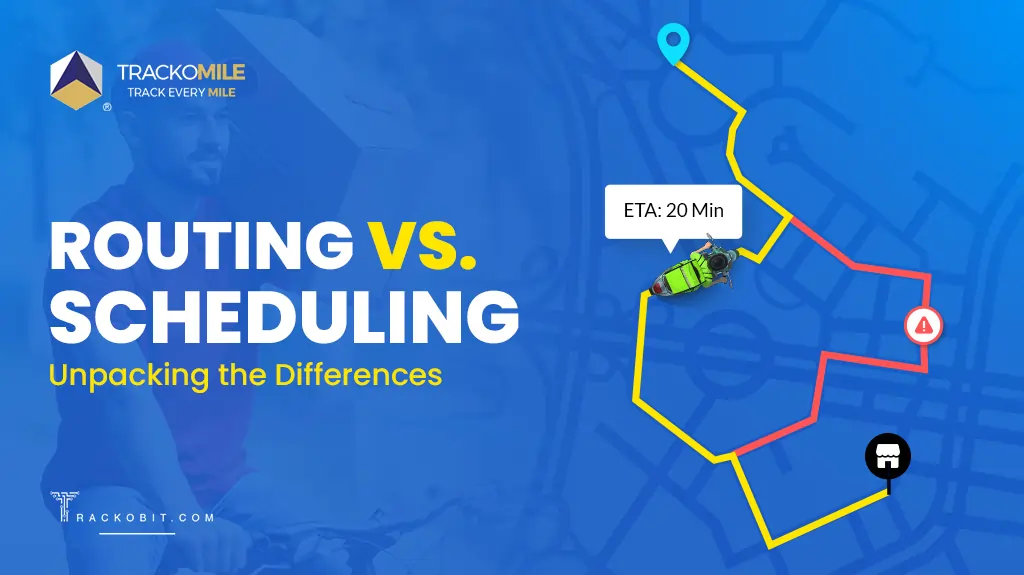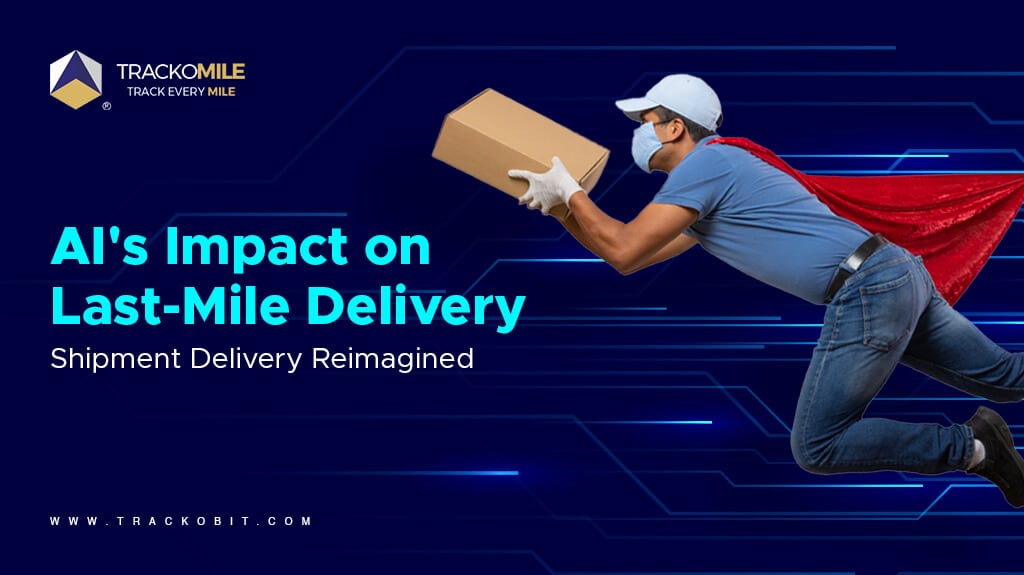-
TrackoBit
Manage commercial vehicles with the new-age Fleet Management Software
TrackoBit -
TrackoField
Streamline your scattered workforce with Field Force Management Software
TrackoField -
Features Resources
About Us
Get to know TrackoBit: our team, ethos, values, and vision.Careers
Join the most dynamic cult of coders, creatives and changemakers.Tech Support
Learn about our technical support team and services in detail.Events
Check out the exhibitions where we left our marks and conquered.
Contact Us
Connect with us and let us know how we can be of service.
What is Carbon Neutral Shipping? Best Ways to Implement It
- Author:
- Read Time:7 min
- Published:
- Last Update: June 13, 2024
Categories
Table of Contents
ToggleCategories
- Field Sales And Service
- Telematics
- TrackoBit
- Task and Workflow
- Miscellaneous
- GPS Software
- Lead Management
- Fleet Management
- Leave And Attendance
- Video telematics
- TrackoField Industries
- Route Planning
- TrackoMile
- Driver Behaviour
- Last Mile Delivery
- Asset Tracking
- Dispatch Management
- Fuel Management
- Route Optimisation
- Electric Vehicle
- Roster Management
- Vehicle Tracking
- TrackoMile Industries
- TrackoBit Industries
- More
- Sensor Integration
- Topical
- GPS Trackers and Hardware
- Tech and Beyond
- TrackoField
- What's New
- Employee Management
- Company

Adopt carbon neutral shipping methods to be a hero and save the planet while delivering last-mile orders to woke consumers. It’s that simple! Read the blog for complete information.
Table of Contents
ToggleCarbon Neutral Shipping- the need of the hour!
No, no, this is not another fancy shipping term, but rather the future of the supply chain.
Carbon emissions are a leading cause of the climate crisis and its repercussions. Many industries are looking for ways to reduce emissions in an attempt to slow down the damage to the environment. When it comes to logistics, shipping emits a high volume of black carbon, which affects the carbon dioxide in the air.
To reduce carbon emissions in the e-commerce industry, a growing number of online brands are participating in sustainable practices, including the option of carbon neutral shipping.
In this article, you will learn what carbon neutral shipping is, why it’s important, and how you can reduce carbon emissions from shipping.
What is Carbon Neutral Shipping?
The term “carbon-neutral” describes actions that, when carried out correctly, produce a net zero quantity of carbon dioxide. The goal of carbon-neutral shipping is to lessen the package’s carbon footprint.
Making the move to carbon-neutral shipping is a significant step towards monitoring our carbon dioxide emissions, which gets us one step closer to protecting the environment. Carbon dioxide is one of the main causes of climate change. You will be surprised to know that human activities have resulted in the atmosphere’s carbon dioxide level rising by 50% in less than 200 years.
Global Carbon Emissions: The Rising Concern
Our world is currently experiencing an immense catastrophe. The combustion of fossil fuels releases greenhouse gases into the atmosphere, including carbon dioxide, which traps heat and raises global temperatures. Transport, a crucial aspect of the world economy, is responsible for an astounding 24% of carbon emissions worldwide. If the amount of carbon emissions created by this process is not controlled, it might have disastrous effects on our world and its people.
Carbon-neutral shipping is becoming increasingly popular as a potent weapon to reduce greenhouse gas emissions as people around the world band together to fight climate change. By offsetting emissions through carbon credits and sustainable practices, working towards net zero emissions and a cleaner, greener future is feasible.

Increasing Importance of Sustainable Shipping
The last mile delivery sector is revolutionising how we purchase and driving a worldwide demand for goods delivered right to our doors. But there is an environmental cost to this comfort. A significant source of carbon emissions worldwide, shipping is coming under increased scrutiny as consumers look for eco-friendly businesses.
Eco-friendly packaging materials and investments in renewable energy projects are two examples of sustainable shipping practices quickly becoming indispensable to a thriving eCommerce company. By implementing carbon-neutral transportation options, businesses can benefit from:
- Lower costs
- More productivity
- Enhanced market competitiveness,
- Ability to satisfy the ever-increasing demands of environmentally concerned customers.
Strategies for Implementing Carbon Neutral Shipping
Although switching to carbon neutral shipping may seem difficult, it is an essential step toward a more sustainable future. This section will discuss the different processes involved in achieving carbon-neutral shipping, such as calculating one’s carbon footprint, using eco-friendly packing, and planning the best possible route for delivery.
1. Evaluating the Current State: Assessing Your Carbon Footprint
Assessing your present carbon footprint—a measurement of the entire amount of greenhouse gas emissions that your company is accountable for—is the first step towards carbon neutral shipping. Understanding your emissions clearly will help you pinpoint problem areas and implement reduction plans to lessen your carbon impact.
Using tools like the Business Emissions Calculator from the Carbon Fund and Greenly’s carbon footprint assessment service. You can set goals to cut carbon emissions, assess your present emissions, and, if necessary, determine where to buy carbon offsets.
2. Green Packaging: Adopting Sustainable Packaging Solutions
Using eco-friendly packaging is one of the best strategies for reducing the environmental impact of your shipping operations. Using sustainable materials like recyclable and biodegradable packaging can help you cut waste and reduce your carbon footprint.
Reducing the quantity of packing used can also result in financial savings through a lower dimensional weight—a pricing strategy that carriers employ to determine how much space a package occupies. Businesses may use eco-friendly materials and minimise packing to contribute to lowering their carbon footprint and developing a more sustainable shipping strategy.

3. Strategic Shipping: Optimizing Transportation and Delivery Routes
Carbon neutral shipping also requires careful consideration of delivery and transportation route optimisation. Using software for route optimisation, companies can:
- Plan and optimize the most efficient routes for deliveries, service calls, and pickups
- Minimize travel time
- Reduce fuel consumption
- Improve overall efficiency in logistics operations
Businesses need to be proactive in lowering their carbon footprint and implementing sustainable procedures to lessen the detrimental effects of shipping on the environment.
Technology, a Crucial Driver
Innovations in every industry have benefited greatly from technology, and logistics is no exception. New technologies have a lot of potential to cut emissions dramatically. Here are a few important choices:
A) The EV Way
Electric vehicles (EVs) are an obvious way to cut carbon emissions in last-mile logistics. However, switching to EVs is difficult because of their higher starting costs and a lack of infrastructure for charging them. Even though an electric vehicle (EV) costs more upfront than a diesel vehicle, over the course of five to ten years, when maintenance and fuel prices rise, EVs become more cost-effective.
Switching to electric vehicles (EVs) necessitates resolving issues, including the availability of charging stations and specialised technological requirements, particularly for heavy-duty vehicles.
B) Routing
Brands understand how important routing is for emissions contributions. Manual routing methods have drawbacks due to their absence of sophisticated capabilities like dynamic and on-demand routing. Technological developments in the last-mile industry have produced creative solutions within the past ten years. For example, TrackoMile offers advanced routing capabilities backed by machine learning, popularly known as route optimising solutions.
(i) Dynamic Routing
Increased urbanisation frequently brings with it obstacles like traffic jams and other difficulties. Vehicles spend too much time on the road due to legacy systems’ lack of dynamic routing, which raises emissions. The TrackoMile route optimisation solution recommends the most effective route, cutting down on delivery times and emissions, by considering over 120 real-world limitations, including current traffic, roadblocks, and more.
(ii) On-demand Routing
Due to ineffective routing and capacity planning, brands frequently struggle with ad hoc or on-demand orders while attempting to increase inventory to meet client requests. Rerouting these orders is possible with the help of TrackoMile. The system redirected the order to other vehicles if a driver or truck could not handle it with its carrier management solution.
Additionally, it guarantees that current orders won’t be delayed, increasing productivity and eliminating the need for restocking, cutting down on driving time.
C) Reverse Logistics
92% of consumers, according to statistics, are likely to buy if returns are simple. To improve consumer satisfaction, brands need to simplify returns. The inability of conventional dispatch management systems to optimise reverse logistics frequently leads to increased emissions. The intelligent dispatch management software from TrackoMile can suggest routes incorporating return and forward logistics, assigning orders automatically depending on vehicle volume, thus streamlining and reducing environmental impact.
Read Blog – What is Reverse Logistics?
The Advantages of Carbon-Neutral Shipping
The shift towards carbon neutral shipping provides numerous benefits, positively impacting both the environment and the shipping sector.
Environmental Gains: Carbon-neutral shipping dramatically reduces the industry’s negative environmental effects. It eliminates the environmental harm caused by shipping operations and creates a path for effectively cutting the current level of carbon emissions worldwide.
Economic Benefits for Shipping Companies: Contrary to popular belief, sustainability does not have to be costly. In fact, carbon neutral shipping can benefit businesses financially. Many governments offer tax breaks and incentives to encourage the use of environmentally friendly shipping methods.
Consumer and Regulatory Demands: As customer and regulatory pressures increase, businesses that use carbon-neutral transportation methods can gain a competitive edge. This is because many consumers nowadays prefer eco-friendly brands that offer green shipping.
How TrackoMile Supports Companies in Achieving Carbon Neutrality
One of the top supply chain and logistics technology platforms is called TrackoMile. Its creative fixes contribute to achieving carbon neutrality. The solution from TrackoMile improves overall supply chain efficiency, lowers fuel usage, and streamlines logistics processes.
With its real-time tracking, visibility into transportation procedures, and route optimisation features, TrackoMile helps businesses reduce the carbon impact of their shipping operations. Firms can lower emissions by optimising routes, implementing eco-friendly transportation modes, and consolidating shipments.
Furthermore, TrackoMile’s solutions will help reduce fuel consumption, plan schedules for EV vehicles, and employ more eco-friendly dispatch methods. With its data-driven methodology and cutting-edge logistics technologies, TrackoMile is a key player in helping businesses lessen their environmental footprint and achieve carbon neutrality.
Conclusion
To sum up, reducing the shipping industry’s environmental impact requires implementing carbon neutral shipping practices. As the world community understands the significance of sustainable practices, businesses and individuals will work together to create a cleaner, greener future.
Through eco-friendly decisions, emission reduction, and sustainable practices, companies such as TrackoMile pave the path for a more sustainable future for the shipping industry and the globe.
Tithi Agarwal
Tithi Agarwal is a content writer at TrackoBit. She enjoys writing blogs which are knowledgeable yet fun to read. And when she is not typing away to glory she has her nose buried in books.
Related Blog Test
-

Routing and Scheduling: The Key Differences
Tithi Agarwal 30 August 2024Are you confused between “routing” and “scheduling,” and are you looking for ways to have the best of both worlds? Why not opt for routing and scheduling software that optimizes business operations?
-

Difference Between Dispatch And Shipment
Tithi Agarwal 27 August 2024Shipment and dispatch are two common supply chain terms that play a huge role. However, they are also the terms people confuse and use interchangeably the most. Let’s eliminate the confusion.
-

What is WISMO? Unsolving the Mystery
Tithi Agarwal 22 August 2024Reduce WISMO (Where Is My Order) calls and save valuable time and resources by providing customers with real-time order tracking links. This simple solution equips them with the necessary information, minimizing unnecessary inquiries.
-

AI in Last-Mile Delivery: 12 Transformative Ways Shipments Reach Customers
Tithi Agarwal 7 August 2024Buckle up because you are stepping into the future: the adoption of AI in the last mile delivery. With its help, you can ensure almost free and same-day delivery to customers.
Thank you for reaching out! We'll speak to you soon.
In the meantime, why not find out more about us, explore our products, or visit our blog?
Stay Updated on tech, telematics and mobility. Don't miss out on the latest in the industry.
Cookie Consent
We use cookies to enhance and personalize your browsing experience. By continuing to use our website, you agree to our Privacy Policy.






























